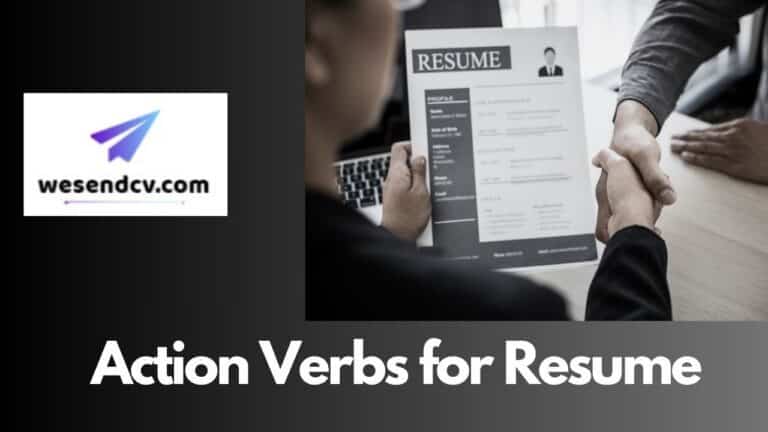Crafting a resume that stands out is already challenging, but when it comes to showcasing soft skills, it can be even trickier. Words like “team player” and “strong communicator” are often thrown around but fail to impress if they’re not backed up by solid examples. So, how can you showcase your soft skills without sounding generic or clichéd?
In this article, we’ll dive into seven actionable ways to showcase your soft skills in a resume to grab the attention of recruiters.
Main Highlights of Content
Toggle1. Show, Don’t Tell: Use Concrete Examples
Telling recruiters that you’re “adaptable” or a “problem solver” is good, but without proof, it sounds hollow. To make your soft skills stand out, use real-world examples to show how you’ve applied them in your past roles.
Tip:
Incorporate soft skills into the context of your job accomplishments. Focus on what you did and the result it led to.
Example:
Instead of saying, “I’m a team player,” say, “Collaborated with a cross-functional team to improve project workflow, reducing completion time by 15%.”
Why It Works:
You’re showing how your teamwork led to a measurable result, which is much more compelling than just stating that you’re good at teamwork.
2. Highlight Your Soft Skills in Your Resume Summary
The resume summary is the first thing recruiters read, so use it to immediately highlight your top soft skills. But avoid listing them like a grocery list. Instead, integrate them into a narrative about who you are and what you bring to the table.
Tip:
Frame your summary with both hard and soft skills. Include examples that tie into your achievements and responsibilities.
Example:
“Experienced project manager with over five years of leading diverse teams to deliver projects on time. Adept at conflict resolution and fostering a collaborative team environment, ensuring high project success rates.”
Why It Works:
It shows the recruiter right away that you’ve used your soft skills to produce results, making your resume memorable.
3. Use the STAR Method in Your Work Experience
The STAR method (Situation, Task, Action, Result) is an excellent way to communicate how your soft skills helped solve problems or create value. By breaking down your examples in a structured way, you can seamlessly weave soft skills into your work history.
Tip:
When describing past roles, focus on specific situations where your soft skills made a difference. The STAR method helps you communicate those stories clearly.
Example:
“Spearheaded a project to streamline internal processes (Situation) by collaborating with department leads (Task), fostering open communication (Action), which led to a 20% increase in efficiency (Result).”
Why It Works:
The STAR method ensures you’re not just listing soft skills; you’re proving them with real examples.
4. Incorporate Soft Skills in Bullet Points Under Achievements
Many resumes feature bullet points under job experience, but not all of them show soft skills effectively. Instead of writing generic lines, focus on how your soft skills contributed to notable achievements.
Tip:
Frame your soft skills within the context of what you accomplished, making it specific to your role and results.
Example:
- Led a team of 6 to resolve 20+ customer service issues per day, improving customer satisfaction scores by 25%.
- Facilitated a company-wide training program, increasing staff engagement by 30% through enhanced communication.
Why It Works:
It turns vague soft skills like “leadership” and “communication” into something quantifiable and relevant to the job.
5. Integrate Soft Skills in Your Cover Letter
While your resume should focus on showcasing both hard and soft skills, your cover letter is the perfect place to go into more depth about your soft skills. Use it to tell a story that highlights your soft skills and connects directly to the role you’re applying for.
Tip:
Choose one or two soft skills and elaborate on how they’ve helped you succeed in previous roles.
Example:
“During my time at XYZ Corp, I led a cross-department project where strong communication and adaptability were crucial. By fostering an environment of transparency and open dialogue, the project was completed three weeks ahead of schedule.”
Why It Works:
You’re providing context to the soft skills, showing the hiring manager how you’ve applied them in real scenarios.
6. Tailor Your Soft Skills to the Job Description
Instead of using the same soft skills for every job application, tailor them to match the job description. If the company is looking for someone who can handle multiple projects, highlight your multitasking and time management skills. If they’re looking for a strong communicator, show how your communication led to concrete achievements.
Tip:
Look at the job posting and mirror the language the company uses. This will show recruiters that you’re a good fit for the specific role and company culture.
Example:
If the job description highlights “collaboration” and “leadership,” you could say: “Led a team of 10 to develop a collaborative strategy that increased team productivity by 15%.”
Why It Works:
Recruiters look for candidates who match the job description. By aligning your soft skills with their needs, you’re increasing your chances of standing out.
7. Use Action Verbs to Demonstrate Your Soft Skills
Using action verbs is a subtle way to demonstrate your soft skills without sounding generic. Words like “led,” “facilitated,” “mentored,” and “resolved” convey a strong sense of how you’ve applied soft skills in real-world situations.
Tip:
Swap out passive phrases like “responsible for” with action verbs that showcase your initiative and results.
Example:
Instead of writing, “Responsible for managing a team,” say, “Led a team of 8 to exceed quarterly sales goals by 20% through effective communication and conflict resolution.”
Why It Works:
Action verbs bring your resume to life and show that you’re not just passively listing responsibilities, but actively driving results.
Conclusion: Showcase Your Soft Skills Like a Pro
Showing soft skills on a resume doesn’t have to be vague or generic. Use real examples, quantify your results, and tailor your skills to the job description to make a strong impact. The key is to integrate your soft skills into the achievements and responsibilities of your previous roles, so you’re showing — not just telling — why you’re a great fit.
For more help on crafting the perfect resume, check out tools like the Resume Formatting Tool or the Resume Length Calculator to ensure your resume is optimized from both a content and structure perspective.







